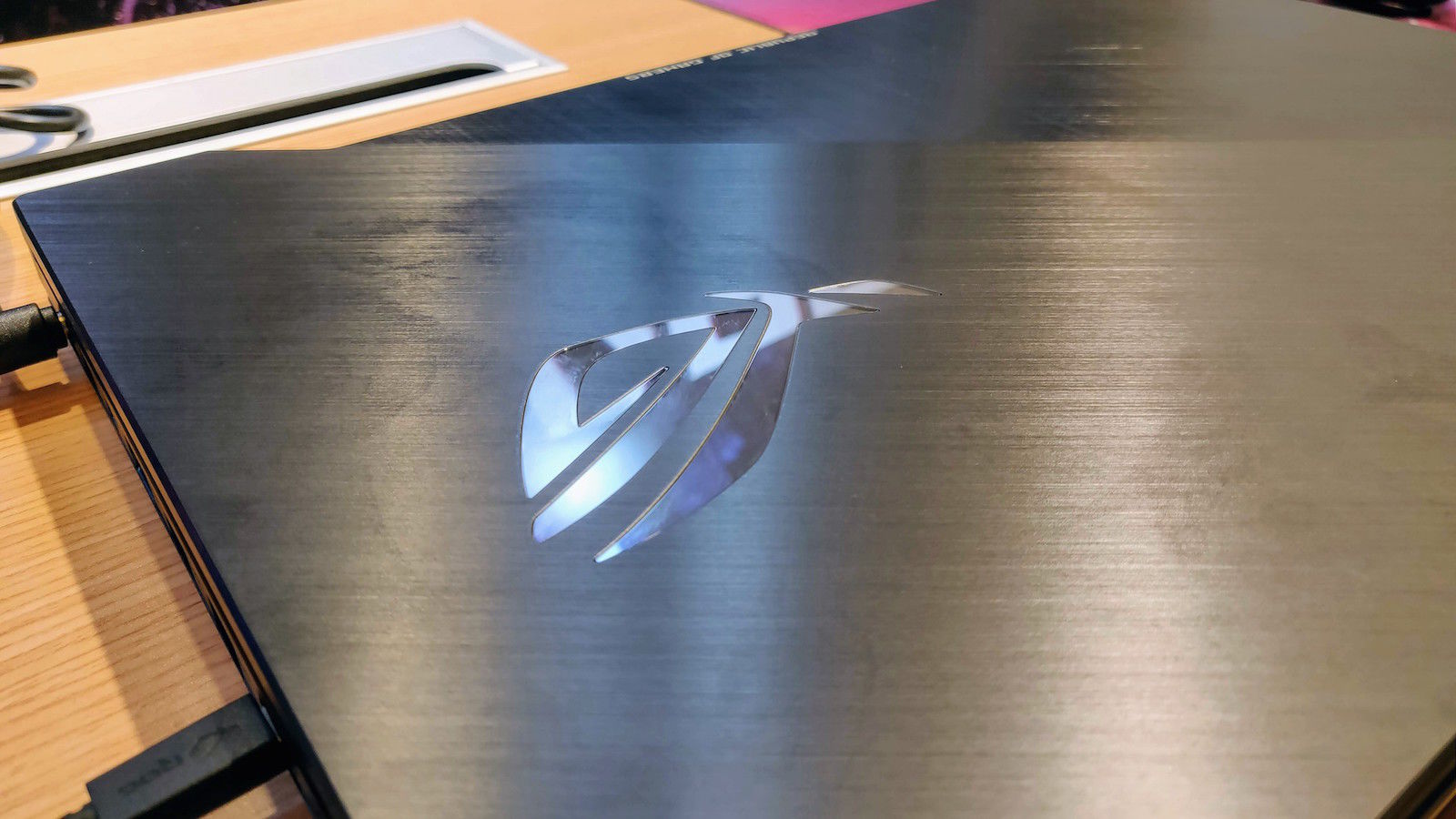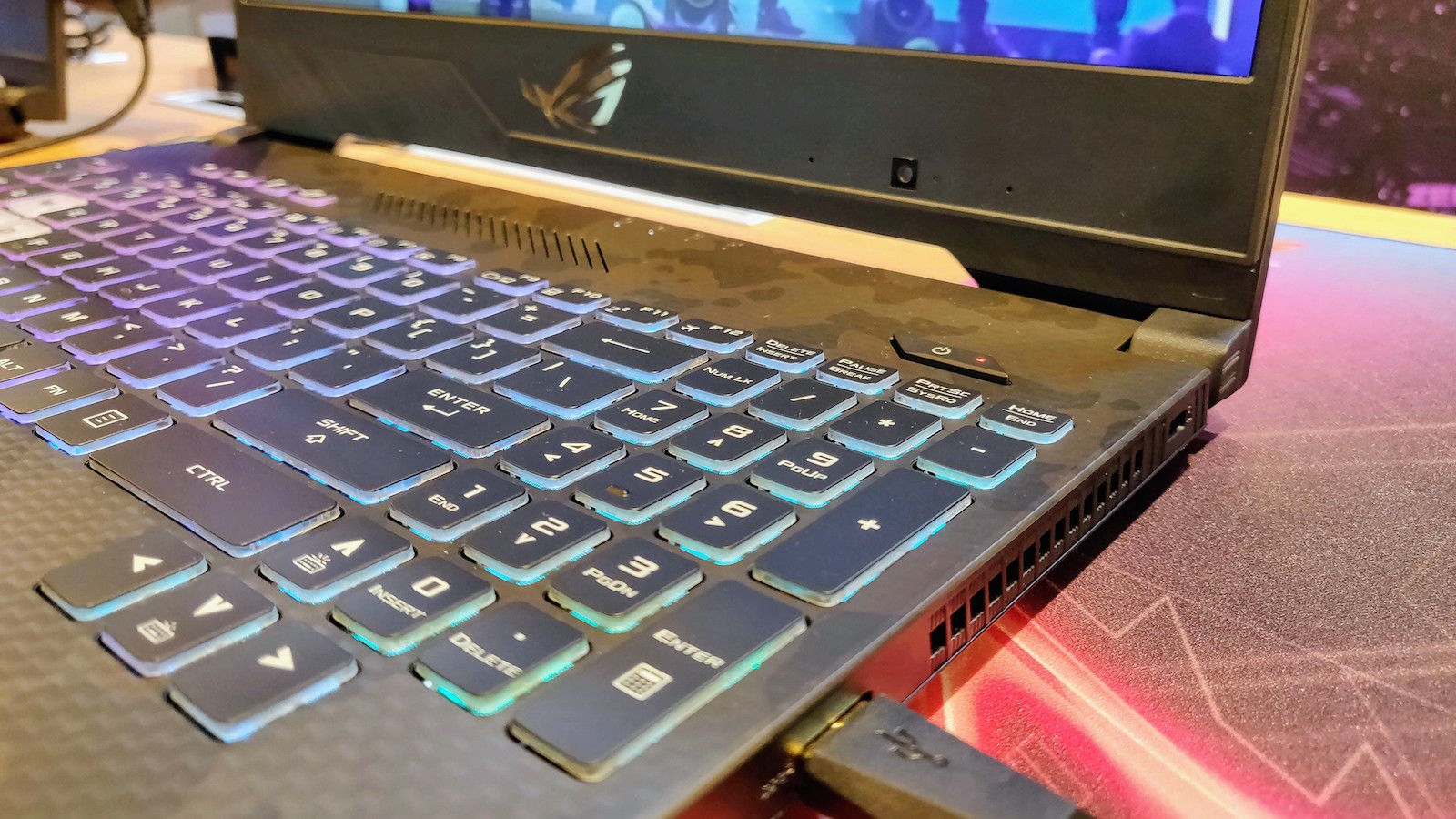There were two new models announced at Computex 2018 in Teipei – the Strix Hero II aimed at MOBA gamers and the Strix Scar II which is tailored to those playing FPS games. We’re using ‘2’ instead of ‘II’ for ease. You can also check out our Asus ROG Phone review, a new Razer Phone rival, and Asus ZenBook Pro 15 review with its innovative ScreenPad second display.
Price & Availability
This makes choosing a lot easier than the Razer Blade 15 which comes in a lot more skus. And the 1070 Scar 2 matches the price of the 1060 Blade 15 making it a pretty good deal. Other rivals include the Gigabyte Aero 15X v8 and Alienware m15. Check out our chart of the best gaming laptops.
Design & Build: Light ’em up
The Strix Scar 2 is deceptive in that it appears to be very thin and light, however, it is 26.1mm and 2.4kg. So it’s thicker and heavier than the Gigabyte Areo mentioned above but lighter than its predecessor. This illusion is primarily achieved by chopping off the corners at the front where no components are in the way. Still, those figures are better than a number of rivals like the Alienware 15 R3 so this is a portable high-end system. The Strix Scar 2 looks great. The overall style is appealing and it looks like it means business. You get a two-tone finish on the lid with the ROG logo – RGB lit, of course – sitting within the lighter brushed metal area. Asus says it’s inspired by ‘a bullet homing in on its target’. Shrug. You also get super narrow bezels that are 2.33cm smaller than its predecessor so this is one key change. The screen is surrounded by a rubber frame in order to protect it, but also make the bezels look even smaller – we’re not sure about the latter. It’s nice to see a design refresh rather than just hardware so the Strix Scar 2 looks sleek and modern. Asus just didn’t get there first with this XPS-style, er, styling. We particularly like the smudge-proof Kevlar weave around the keyboard and trackpad. Speaking of the keyboard, this is another area of improvement albeit not a major one. Since the Scar is aimed at FPS players, the WASD keys are highlighted with transparent caps and semi-transparent sides (the Hero is QWER). Naturally the keyboard has Aura RGB lighting but has improved travel of 1.8mm despite using the same membrane switches as previously. There’s also ‘Overstroke’ technology, which means you don’t need to press as hard to register input and strokes are registered early. It’s nice and responsive and setup nicely for gaming, of course. There’s a pretty standard trackpad with dedicated rather than integrate mouse buttons. More interesting, though, is the new lighting bar on the front. If you’re not that fussed about the drama of RBG additions then you can just switch it off. Last but not least is an upgraded cooling system, which consists partly of new 12V fans. The pair has smaller 0.1mm blades so there are more of them and they also spin faster. Asus says the airflow is up to 42.5 percent better. The HyperCool Pro thermal system also has an extended cooling plate to better spread heat and keep the CPU and GPU below 90 degrees. There’s also a trapezoid cut at the back to avoid the lid blocking airflow. Should you need it, you can quickly activate Fan Overboost mode for extreme cooling with an Fn+F5 shortcut. Even in this mode Asus claims a maximum of 50dB noise. We found the Scar 2 quiet in use.
Specs & Features: Silky smooth
There aren’t just upgrades to the design of the Scar II and the screen will likely be the main lure for a lot of gamers. Narrow bezels aside, the 15.6in IPS display has a 144Hz refresh rate combined with a 3ms response time. It’s the only one means silky smooth performance. The Full HD screen is also 20 percent brighter than before and has a non-glare coating, which is always our preference. We clocked it at a decent but not amazing 300cd/m2. Other specs remain largely the same with an 8th-gen Intel Core i7-8750H with a Core i5-8300H also available in the US. The six-core i7, as we found on the Aero 15X is very capable. There’s up to 32GB of 2666MHz dual-channel SDRAM and either 128-, 256- or 512GB PCIe M.2 SSD coupled with a 1TB traditional drive. In the graphics department is an Nvidia GeForce GTX 1060 with 6GB of GDDR5 VRAM or a GTX 1070 that steps things up to 8GB. We’ve reviewed the latter. As you can see from the results below, it performs very well indeed across the board. Note that the Alienware m15 we tested has 32GB of RAM.
Rounding off the specs includes 11ac Wave 2 Wi-Fi with a multi-antenna RangeBoost technology. Asus says the new Strix laptops are the first in the world to do so and means 30 percent more range, higher throughput and fewer dropouts. FPS players are likely to use a headset, but if you forget to pack your headphones then the Strix Scar 2 has improved audio. The 3.5W speakers are twice as loud compared to the original and they’re side-firing to help with in-game awareness. For connectivity there is a USB-C 3.1 port (not required for power), three USB-A 3.1 ports, HDMI 2.0, mini DisplayPort 1.2, RJ-45 Ethernet, a combo audio jack and an SD card slot. The only real downside is batter life which is historically bad on gaming laptops. Although we have seen some good results over the last couple of years, the Scar 2 isn’t one of them, managing only two hours and 37 minutes in our test. Here we loop a 720p video with the screen set to 120cd/m2, that’s 30 percent brightness in this case.
Verdict
At full price, we probably wouldn’t be scoring the Scar 2 a nine out of 10, but considering how cheap you can get a GTX 1070 model, it’s a bit of a bargain. That means, combined with a powerful Core i7, plenty of performance and there are other highlights including the 144Hz screen with a 3ms response time, which is now modern with small bezels. There’s more to like including the stylish design, array of ports and decent keyboard and trackpad. You’d only be put off the Scar 2 if you want to travel around with it a lot, due to its weight and short battery life. Tech Advisor’s Reviews Editor, Chris has been reviewing all kinds of tech for over 10 years and specialises in audio. He also covers a range of topics including home entertainment, phones, laptops, tablets and more.



